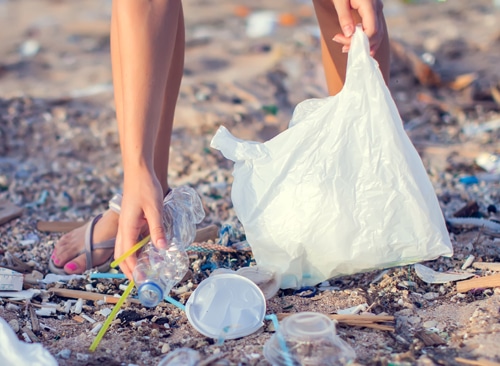
Paper Straws or Plastic Straws? The Choice is Clear
The push to go paperless was once central to environmentalists, and rightfully so. The paper industry, like most industries, had plenty of opportunities to improve sustainability. The pressures on the paper industry in the 1980s and ’90s led to the Forest Stewardship Council (FSC), the Sustainable Forestry Initiative, recycling programs, consumer advocacy for recycled goods, and innovations throughout the manufacturing process.
What was once a focus of environmental concern became an industry success story. Paper is no longer a problem; it is a solution. With recent legislation against plastic straws, we have gone full circle on paper. Enter the paper drinking straw.
Once a Novelty, Paper Straws are Going Mainstream
Paper straws began as a novelty you might experience at a zoo, aquarium, or another environmentally concerned venue. Zoos and aquariums have a vested interest in keeping their animals safe from their guests’ litter, and plastic straws can be very troublesome. However, what makes sense for zoos and aquariums, makes sense for our planet. National, state, and community bans on plastic straws are spreading around the globe and across the United States. Unfortunately, cheap paper straws are flooding the market after these bans, and restaurants are learning the hard way that not all paper straws are equal.
Poorly Made Straws are Damaging the Paper Straw Market
Poorly made paper straw imports are damaging public perception. Restaurant buyers and distributors searching for low-cost options have stumbled across this glut of terrible straws. Their customers left the hotel or restaurant and told their tale of sipping $15 cocktails through mushy straws. Many consumers have shared this experience with paper straws. If this is your perception of the paper straw, then choosing to sip from the glass or using plastic would be understandable. The truth is, there are paper straws, like BOSS straw, that stay strong for hours, are taste-free, and safely decompose in the environment.
Plastic Straws are a Clear Danger
Advocates for ditching straws altogether argue that the carbon emissions from paper manufacturing are harmful. This is a weak argument and a distraction from a much larger problem. Plastic straws require oil, stick around for hundreds of years, break down into harmful microplastics, and get caught in the throats of wildlife. Furthermore, material supply chain and manufacturing for plastic straws also result in carbon emissions and involve oil pipelines and tankers. This article posted by the WWF gives even greater detail on the lifecycle of plastics.
What is Wrong with Plastic Straws?
- 200-year life cycle
- Breaks down into harmful microplastics
- Requires oil for manufacturing
- Dangerous to animals when swallowed
Quality Paper Drinking Straws — Great to Use and Better for the Environment
Paper straws go away. They are made from recyclable paper and food-grade binding designed to compost in the soil and break down in seawater. While choosing to sip from the edge of a cup is the best choice for our environment, false equivalencies between plastic and paper straws are meritless and only serve a do-nothing mindset.
The struggle to achieve sustainability and harmony with the environment will not end with paper drinking straws, but it is estimated that 8.3 billion plastic straws litter coastlines globally, contributing to microplastics in our food supply, and endangering our ecosystem. Enviro Sip Straw is proud to be a part of this struggle, and we hope that our BOSS straw makes a difference.
Benefits of BOSS Straw Paper Drinking Straws:
- Strong — Even in soda, BOSS straw resists collapsing, shredding, or becoming soggy for 24+ hours.
- Taste Free — No pulpy, paper taste interfering with your water, tea, lemonade, or pop.
- Earth Friendly — Made from 100% recyclable paper and food-grade, biodegradable binding.